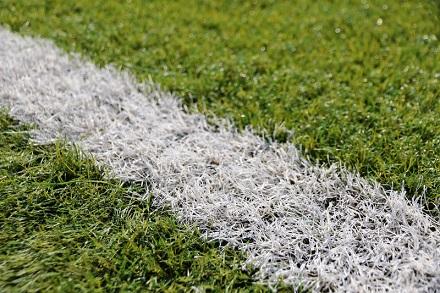

Late last week, the agency released the first part of its study of the recycled crumb rubber used in the majority of synthetic turf sports fields. Entitled Synthetic Turf Field Recycled Crumb Rubber Research Under the Federal Research Action Plan, Final Report Part 1, Tire Crumb Rubber Characterization Volume 1, the report (which clocks in just under 300 pages) can be found here.
There are plenty of big-name players in the report; in addition to being authored by the EPA's National Exposure Research Laboratory, Office of Research and Development, contributors included the Centers for Disease Control and Prevention's Agency for Toxic Substances and Disease Registry.
But the biggest takeaway from the report is that users – meaning athletes who play on those fields – do not have any significant exposure to chemicals, harmful or otherwise. And many of those chemicals are already found in grass fields.
According to Athletic Business Magazine, the Synthetic Turf Council released the following summary of Part 1 shortly after the report's release:
- This research represents the largest and most robust study of synthetic turf fields and tire crumb rubber to date in the United States.
- Findings from this study support the premise that while many chemicals are present in the recycled tire crumb rubber, exposure may be limited based on what is released into air or biological fluids.
- The presence of a substance in recycled crumb rubber does not directly equate with human exposure. While there are many chemicals associated with recycled tire crumb rubber, [the EPA] laboratory experiments suggest that the amount of chemicals available for exposure through release into the air and simulated biological fluids is relatively low.
- Emissions of many organic chemicals into air were typically found to be below detection limits or test chamber background, and releases of metals into simulated biological fluids were very low (mean bioaccessibility values averaged about 3 percent in gastric fluid and less than 1% in saliva and sweat plus sebum).
- In general, concentrations [of measured metal and extractable semivolatile organic compounds (SVOC)] in this study were consistent with, and within the range of, concentrations found in previous studies.
- While there is concern about chemical exposures resulting from the use of recycled tire and other materials in synthetic fields, it is important to recognize that some of the chemicals are likely to be present in other types of fields, including natural grass fields. For example, metals (including lead) and PAHs (including benzo[a]pyrene) of potential concern at synthetic turf fields with tire crumb rubber infill are also often found in surface soil in the U.S. and may be present at natural grass playing fields.
According to the STC, Part 2 of the report will include data to characterize potential human exposures to the chemicals found in the tire crumb rubber material while using synthetic turf fields.
Part 2 will be released along with results from a biomonitoring study being conducted by CDC/ATSDR to investigate potential exposure to constituents in tire crumb rubber. These research activities and the resulting findings do not provide an assessment of the risks associated with playing on or contact with the tire crumb rubber used for synthetic turf fields, according to the STC. Instead, these research results should inform future risk assessments.
The issue of crumb rubber has long been a concern of parents, ever since a television new program tried to establish a link between childhood cancer and synthetic fields. While the report noted that no researchers or physicians had weighed in on the issue, it was enough to send conspiracy theorists into orbit.

